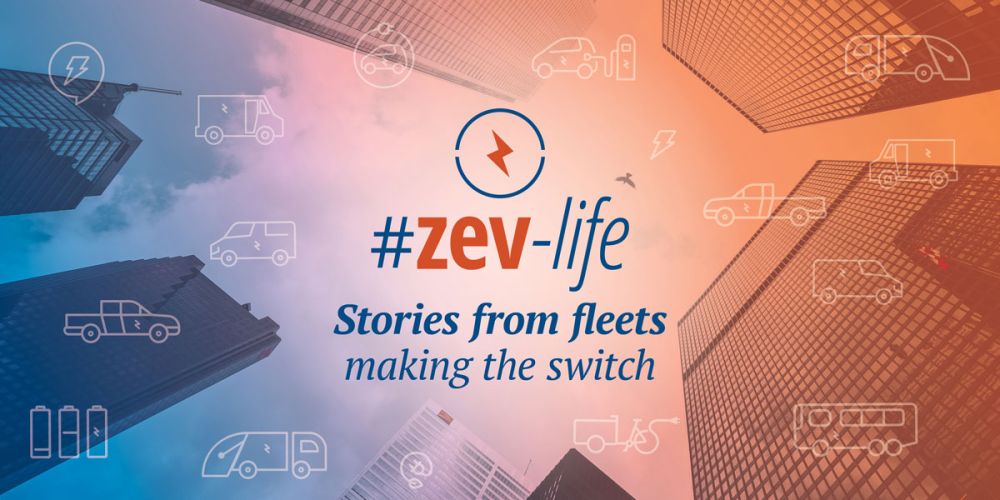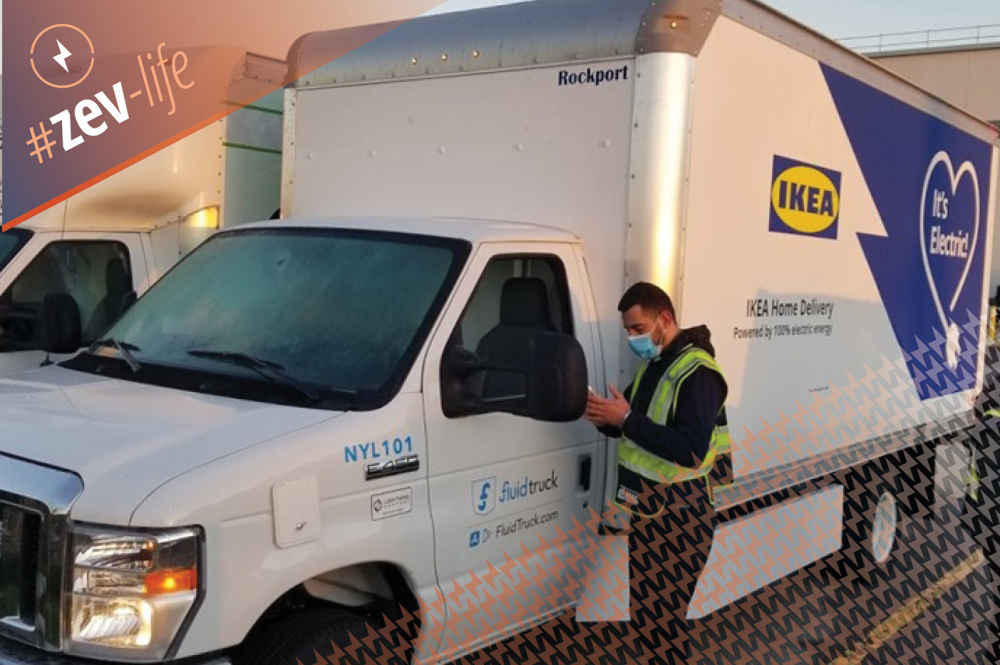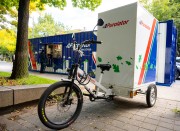The government of Canada’s recent Emissions Reduction Plan highlighted the importance of transitioning the transportation sector off fossil fuels. However, transitioning a fleet of combustion engine vehicles to those powered by electricity presents significant financial and technological challenges. Public departments and private corporations across Canada and the United States are now on the path to a green energy future, often with the help of partners who have the expertise, the shared values, and in some cases the capital, to assist them in making the switch. In this series, the Pembina Institute interviews organizations who have begun the process. This is the third entry in the series. We thank the participants for their time and insights.
International furniture giant IKEA wanted to get its products to homes while eliminating greenhouse gas emissions. But they don’t have their own fleet of drivers. Instead, independent transport service providers deliver their goods. How could they reduce emissions without putting undue burden on these drivers?
The urgency of the threat posed by climate change has prompted IKEA to take proactive steps as part of the global effort to become circular and climate positive by 2030.
Read more from #ZEV-life
Purolator “steps up” to innovate for the climate
Clean garbage trucks? A municipality in Quebec is giving them a try
“We aggressively seek to reduce our carbon footprint wherever we possibly can,” says Steven Moelk, the Fulfillment Project Implementation Manager for Zero Emission Delivery at IKEA U.S. “Everybody will drive electric vehicles in the future … Until that happens, we're going to have to support that [transition].”
The independent transport service providers often fall into income brackets that make the initial purchase of ZEVs, which currently cost more upfront than other vehicles, impossible. As an interim measure, IKEA is taking a creative approach: It provides drivers with access to rented electric trucks, if they are not yet prepared to buy their own.
Truck sharing
To make it happen, IKEA entered into an agreement with Fluid Truck, an online peer-to-peer truck sharing platform, similar to AirBnB, that offers rental options for trucks that are privately owned, including non-emitting ones.
IKEA guarantees that its delivery drivers will rent a certain number of ZEVs each day through the Fluid platform, and the furniture company covers the cost of any shortfall in rentals.
“[Drivers] don’t have to make a big commitment to electric vehicles, they only have to make a small commitment, like by the day or by the week,” explains Moelk.
IKEA is taking a phased approach to this rollout and have started by deploying eight zero-emission trucks in New York City. Soon they will have many more ZEVs on the road and 44 Level 2 chargers installed on the premises. Meanwhile, IKEA is also testing a couple of zero-emission trucks and installing charging infrastructure in Los Angeles and will soon look to deploy another five to seven vehicles.
Within the next 18 to 20 months, the retailer plans to expand the rental option to over 25 additional locations across the United States, with a goal of achieving zero emissions for all IKEA deliveries anywhere in the world by 2025.
Once the full rental fleet of ZEVs is active, and there are enough non-emitting trucks to serve an entire delivery area,IKEA will expect all its transport service providers to use a zero-emission vehicle to deliveritsgoods. The company could end up renting up to 600 trucks across the United States on a single day.
The goal, however, is to convince transport service providers, or third-party logistics providers,toeventually own or lease their own ZEVs instead of renting them through the IKEA agreement.So far, says Moelk, drivers have been supportive of the plan and eager to try out one of the ZEVs.
Barriers to electrification
But there have been complications. Insurance carriers are unaccustomed to providing coverage for electric vehicles. ZEVs are in short supply. Vehicle range is adversely affected when the temperature drops. And charging infrastructure takes time to build.
There is also a cost to the rental plan. Not only will IKEA have to pay Fluid Truck for any shortfall in the number of trucks rented, but it will have to increase the pay scale to drivers per delivery because it is still cheaper to rent a diesel vehicle than an electric vehicle, and the company does not want to download the additional expenses onto drivers.
Moelk says he believes that, eventually, rental agreements of this kind will no longer be needed because the price of ZEVs will come down. Over time, the range of electric vehicles will be equal to that of vehicles with combustion engines and charging stations will be abundant.
But customers are expecting companies to take sustainable actions now, he says. The return on investment is nothing short of “saving the planet… It’s the right thing to do.”
Follow the #ZEV-life series and more on Pembina Institute’s work by signing up for our newsletter.








